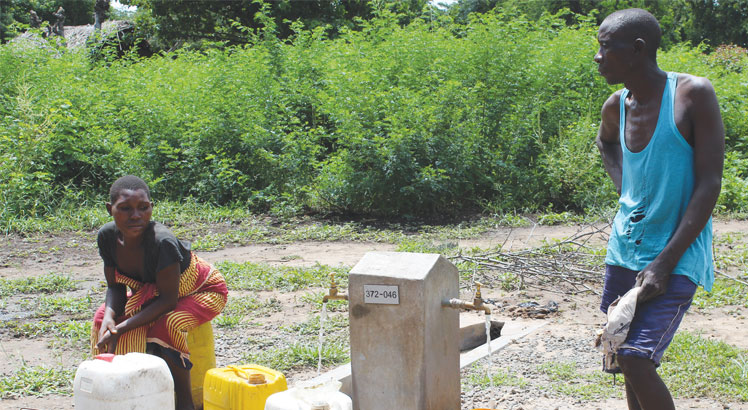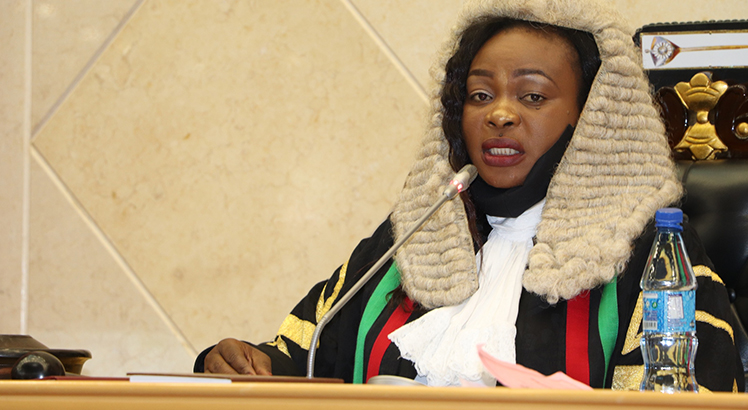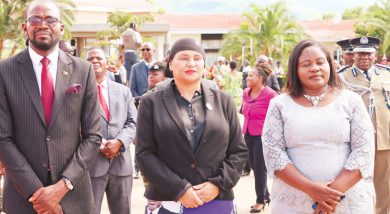World continues searching for fresh, safe water
On March 22 Malawi will join the rest of the world in commemorating World Water Day, a day set aside to advocate for provision of fresh water to people in line with the targets of Sustainable Development Goal 6. As News Analyst LUCKY MKANDAWIRE writes, Malawi’s commemoration this year comes with a landmark innovation by Water for People which is changing the narrative of scarcity of fresh water in Chikwawa much to the pleasure of many, especially school-going girls.
At 16 years, Mphatso Buleya is still in Standard Seven at Ntowe Primary School in Ngabu, Chikwawa.
But some 98 kilometres from Mphatso’s school, her fellow teenager Naleza Banda, who is three years younger, this year awaits writing her Junior Certificate of Education (JCE) examinations at Manja Community Day Secondary School in Blantyre City.
Ordinarily, at her age, Mphatso should by now have completed her secondary school education and contemplating her next academic move, if not already in college.
However, unlike Naleza, Mphatso’s educational passage had been troubled by various factors, including missing classes to help her parents in fetching water for home use.

Almost every day, together with a dozen of other girls and women from Tsamba area, Mphatso used to walk about four kilometres to and from Phwazi River to draw water for the family. As is the case with most places where people draw water from rivers, the Chikwawa villagers shared their source of water with livestock, and the risk of exposure to water-borne diseases has always been real.
“It was always hard to choose between doing household chores, which included walking long distances to fetch water, and rush to school, or first go to school and carry out home errands later.
“Unfortunately, home chores always came first for the survival of the family. There were times we went to school without bathing but as we grew up, and being girls, it was hard to skip bath thus, we ended up missing classes,” explains Mphatso.
Chikwawa is known for its heat and salty water. Tsamba area is not out of the ordinary; the area is generally dry and has not had much joy with borehole water as is the case in most rural areas of the country.
Yes, the boreholes were sunk here and there but the water they produce is too salty for human consumption.
Much as it is said ‘water is life’, communities in Tsamba area hardly use borehole water for drinking and other household chores, a development that contributed to high prevalence of diarrhea and other water-borne diseases.
But today, Mphatso delightedly explains how her performance and that of other girls has improved in class since Water for People brought potable water to their community.
“All the water challenges we used to face are now history, thanks to Water for People. We no longer miss classes; we bathe and wash clothes as we please. The water-borne diseases which were common in this area are now all gone,” explains Mphatso delightedly.
GVH Tsamba expressed gratitude with the coming of the new water system, saying lives of his subjects have greatly been transformed.
Water for People, an international non-governmental organisation has been working in this once troubled area since 2009, striving to provide freshwater boreholes for the communities, but several attempts ended in vain; if it was not the problem of salt, then it was the sides of the wells curving in.
So, in 2017, with financial support from the Scottish Government and in partnership with University of Strathclyde of Scotland, Water for People started implementing a project whose key aspect was to address the challenges of sinking saline boreholes through a method called ‘curbing’.
According to Water for People country director Ulemu Chiluzi, this method attempts to seal saline aquifers and minimise chances of letting the saline water into the well which was partially successful as some areas, including in Tsamba, proved to be difficult even after its application.
Later, Water for People, with support from Charity: Water, sunk four exploratory boreholes to see if the communities could be helped with fresh water using deeper boreholes than normal wells which proved difficult due to salinity levels.
“The successful exploratory deep borehole succeeded after yielding five litres per second… So, we have a 78-metre deep borehole with a submersible solar pump. We also constructed a tank that holds 150 000 litres of water,” says Chiluzi.
The water is pumped from the ground into the tank where it is gravitated to 16 water points (taps) that are distributed to Tsamba, Paiva and Major village heads.
The borehole is serving a population of 4 845, including a primary school and the furthest water point is located on a radius of 4.9 kilometres from the tank.
As Malawi joins the global community in celebrating World Water Day on Tuesday, Water for People’s new system of providing fresh underground water is in line with this year’s theme, which is Groundwater: Making the Invisible Visible’.
According to Chiluzi, studies show that 44 percent of the world’s population depends on groundwater but the number is bigger in Malawi where majority of communities rely on groundwater as their major source of water.
“So, it’s important to preserve this scare resource and we start to make some significant inroads in terms of how we take care of it. We are having this shift from just providing stand-alone water points such as boreholes; so our new system really augurs well with this year’s theme,” he says.
The World Bank reports that unsafe drinking water in both Malawi’s rural and urban areas remains a binding constraint to the country’s growth and poverty reduction with an estimation that the country loses about 1.1 percent of its GDP (about US$3.8 per capita) due to poor health outcomes attributed to, among other things, low access to safely managed sanitation services.
With an “ultra” poverty rate of 22 percent, a day hardly passes in the country without thousands of depressed people, primarily women, scrambling for water, some travelling long distances to reach a water source, notes the World Bank.
According to the 2018 Population Housing Census, less than 10 percent of the population (which was just over 17 million), had access to piped water in their homes.
Of these, 3.1 percent had water piped directly into their homes, while a further 6.3 percent had piped water available in their yards. A further 61.7 percent of citizens used boreholes while 8.1 percent used a community standpipe to access water.
The census further states that the remaining people, comprising just over 20 percent of the country’s population, accessed water from unprotected sources.
Ministry of Water and Sanitation deputy director of water supply and sanitation Phideria Moyo, who last Tuesday appreciated Water for People’s innovation in Chikwawa, says the organisation was operating in line with government’s Malawi 2063 Agenda of clean water to everyone.
“The mandate of supplying water lies with government, however, we work with partners that come and follow government policies. They don’t form their own policies so whatever Water for People is implementing in Chikwawa follows the laid out policies government undertakes,” says Moyo.
It is hoped that Water for People will soon reach more people in Chikwawa with fresh water and replicate the smiles on people like Mphatso Buleya.





